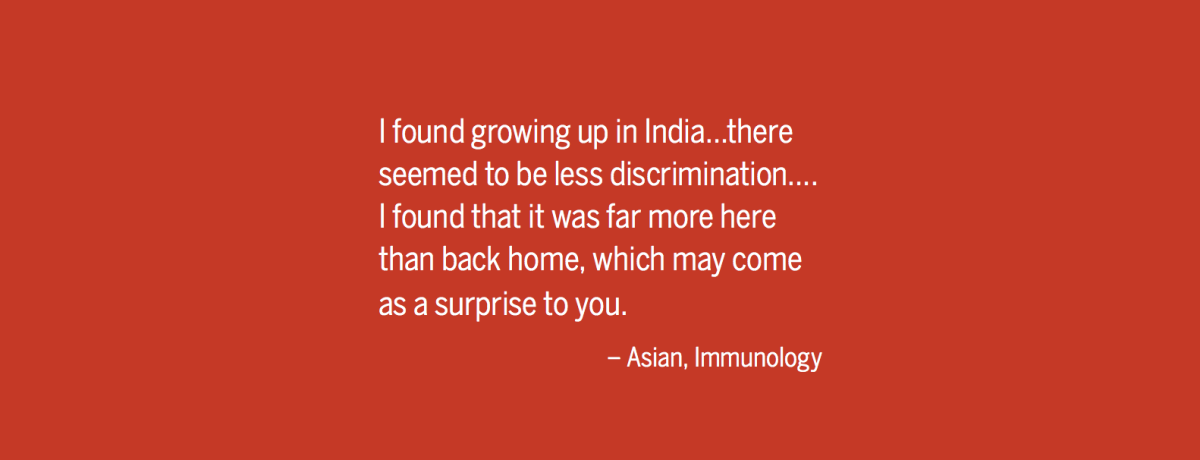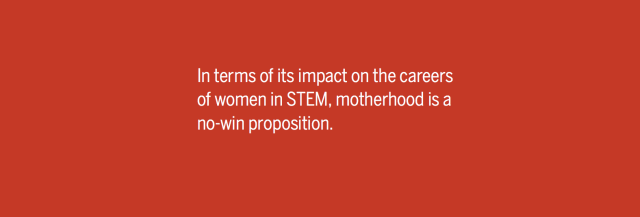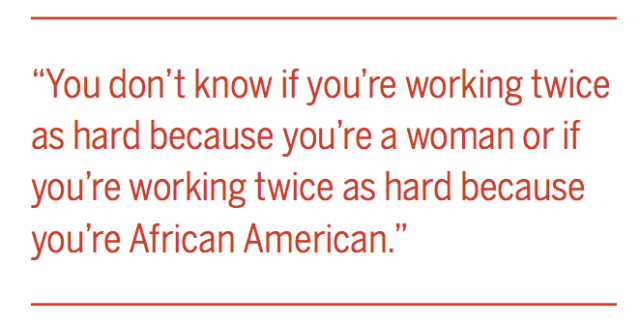A sampling of 60 women of color who work in STEM were interviewed for a study in January from UC Hastings on gender bias in STEM workplaces. The sampling was pulled from a greater survey of 557 women both of color and white.
What the study found was staggering: 100% of the 60 women of color who were interviewed reported experiencing gender bias in the workplace. Moreover, they experience a kind of double-dipped, double helping of biases based on both their gender and their race. They all shared experiences of discrimination in all forms, both subtle (micro-agressions) and overt.
The study highlights these staggering statistics:
- 100% of the women interviewed reported gender bias.
- Black women are more likely (77%) than other women (66%) to report having to prove themselves over and over again.
- The stereotype that Asians are good at science appears to help Asian-American women with students—but not with colleagues.
- Asian-Americans reported both more pressure than other groups of women to adhere to traditionally feminine roles and more pushback if they don’t.
- Latinas who behave assertively risk being seen as “angry” or “too emotional,” even when they report they weren’t angry; they just weren’t deferential.
- Latinas report being pressured by colleagues to do admin support work for their male colleagues, such as organizing meetings and filling out forms.
- Both Latinas and Black women report regularly being mistaken as janitors.
According to the study, there are four distinct patterns involved in gender bias: Prove-It-Again (women have to provide men with more evidence of competence than men to be seen as equal), The Tightrope (women must walk a tightrope between being seen as too feminine to be competent, or too masculine to be likeable), The Maternal Wall (stereotyping that women lose work commitment after they have children), and Tug of War (gender bias against women sometimes fuels conflict among women).
While these four patterns are experienced by both women of color and white women, women of color still experience a set of challenges and biases that are exclusive to them–the “double-dipped, double helping” of biases mentioned earlier.
The study goes as far as to call out the lack of research on intersectionality, saying, “It has long been known that the experience of women of color differs from both that of men of color and from that of White women, a phenomenon known as “intersectionality” (Crenshaw, 1989). But this insight has rarely been explored empirically.”
The statistics may be distressing, but the study does account for the positive experiences of these women. It reads:
An important point, sometimes overlooked, is that while bias is rampant, glimpses of hope also emerge from these interviews – situations where women of color experienced support and success despite the difficulties faced. Specifically, some of the scientists felt that their cultural and racial traditions armed them well to encounter the challenges they faced.
Being a woman of color working in any STEM field can be isolating. As illustrated by one of the “four patterns” above, sometimes the isolation can even come from other women who are also experiencing their own alienation. The study suggests that the best way to combat this isolation and discrimination as a whole is to constantly set out to confront these biases every single day.
Many of these behaviors and actions are carried out on an almost subconscious level. I’m willing to wager many of the men talked about by the interviewees would never consider themselves biased. But that only confirms just how insidious and deep-seated these biases can be.
Fighting every day seems like such an exhausting ordeal, but the idea of trying to change the dynamics of an entire field is a daunting task in and of itself. And it’s one that doesn’t happen overnight.
(via BoingBoing)
—Please make note of The Mary Sue’s general comment policy.—
Do you follow The Mary Sue on Twitter, Facebook, Tumblr, Pinterest, & Google +?











Published: May 15, 2015 04:53 pm